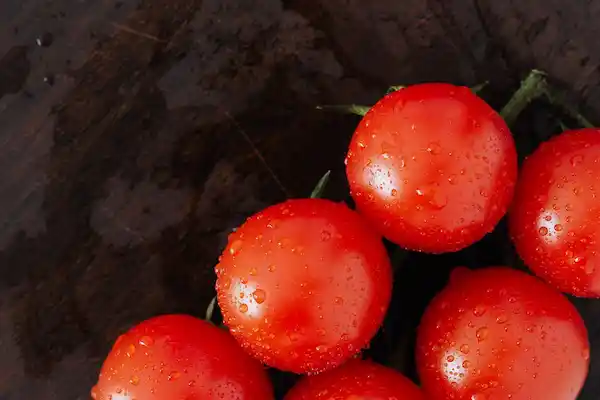Tomatoes are delicious, but they can also be ugly, which means you might hesitate to eat them if they don’t look appealing. For example, suppose you’re concerned about eating a tomato with brown spots, black or yellow spots, or any other type of spots. In that case, it’s essential to know that these spots don’t necessarily indicate the presence of disease-causing bacteria in the tomato and aren’t reason enough to discard it altogether. It all depends on the color of the spot, its size, and where on the tomato it appears.
Tomato Skins
Are you picking tomatoes or eating them when they have brown, black, yellow, or white spots on the skin? The answer to this question depends on whether or not the spots are a result of a disease. Let us see them below.
Black spots
Black spots on tomatoes are caused by a fungus called Botrytis cinerea. According to the USDA, this fungus is common in tomato crops but only infects those already damaged or stressed. Botrytis will not cause disease if tomatoes are consumed in small quantities. Still, it’s always best to avoid consuming mold or spoilage foods.
On the contrary, black spots on tomato skin are an indication that insects may have come into contact with the fruit. Botrytis can produce toxins called mycotoxins that affect human cells and nervous systems.
Brown spots
Not all brown spots on tomatoes are safe to eat. So, how do you know if you can eat them or not? There are two different ways to tell if your tomato has gone wrong, and they’re as follows:
- Smell: A rotten tomato will have a more robust, acidic smell than a good tomato.
- Texture: If you feel the spot with your fingers, a soft spot means it’s ripe for the picking!
- Color: Brown spots usually mean there was an infection of some sort, and you should stay away from those!
- Location: If the spot is near the stem or blossom end of the tomato, stay away from that area; this indicates spoilage.
Yellow spots
Yellow spots on tomato skin are typically associated with under-ripeness or bruising. When these spots occur, the tomato inside is still okay to eat. It doesn’t look any different from other healthy tomatoes. And doesn’t have any oozing brown patches.
White spots
Yes, those pesky white spots can be cut out. They may not look very delicious, but they are harmless in terms of taste and nutrition. You should avoid eating tomatoes only if the green parts are browning or wilting. If this is the case, discard the entire tomato and it will be gone for good!
Are all of these tomato types poisonous?
While the fruit may look unappetizing, it is not always true that you cannot eat the tomato. What you need to consider is the cause of the discoloration. There are a number of different reasons why tomatoes turn color. Some types of discoloration include bruising, blossom end rot (when there isn’t enough water), and sunburn.
- Tomatoes with dark spots on the skin should be eaten if they have no brown liquid around them or any other signs of decay.
- Sunburned tomatoes should also be consumed, but only after the affected area has been cut off. The flesh of this type of tomato will likely still be juicy and flavorful despite the burned exterior.
- Tomatoes that have undergone blossom end rot should not be eaten because their internal tissues are infected with bacteria and fungi. as well as high levels of sugars which could lead to botulism.
- Bruised tomatoes are acceptable for consumption as long as they don’t have any brown liquid or other signs of decay.
Health benefits
The following are the health benefits of eating tomatoes:
- They’re high in lycopene, which is good for your skin and can help fight cancer.
- They also contain a good amount of vitamin C and beta-carotene, which is excellent for eye health.
- They’re also rich in potassium, which helps regulate your blood pressure.
- Tomatoes also have a high water content, so eating them regularly will help you stay hydrated.
- The acids in tomatoes are also suitable for your digestive system because they break down proteins that might harm your stomach lining.
Conclusion
Eating tomatoes with black, brown, yellow, or white spots is safe. They’ll be a little less tasty than a tomato without these imperfections and they might not look as appetizing. However, they’re just as healthy! The bad thing about eating these types of tomatoes is that the bad parts may cause you to choke when eaten whole. To avoid this, cut them up into smaller pieces before eating them.
I am Anand, and I am a business owner and consultant in my day job. I have spent years studying what’s inside the products we buy. ‘Feedrer’ is a wordplay on you-know-who and talks about all things food.
